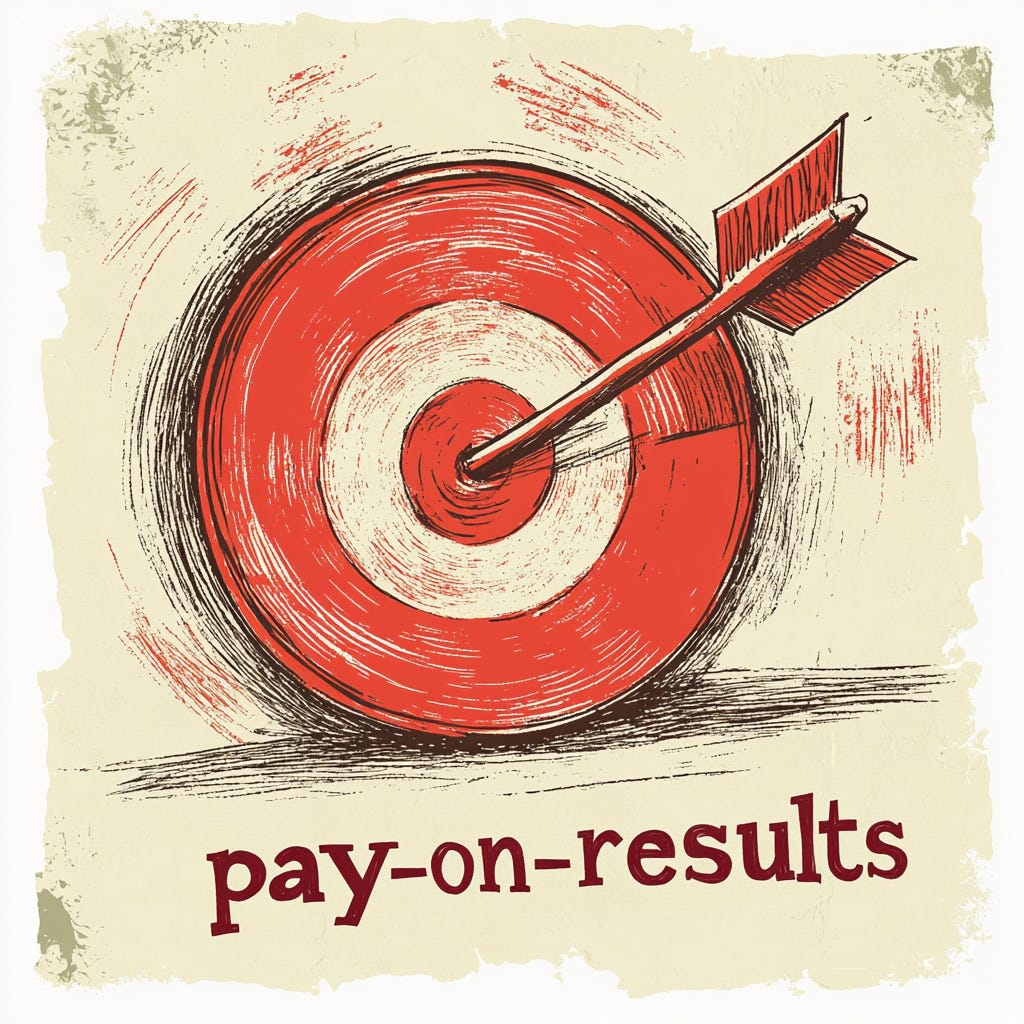The case for pay-on-results coaching
Thanks to Ruby, Stag Lynn, Brian Toomey, Kaj Sotala, Anna Salmon, Damon Sasi, Ethan Kuntz, Alex Zhu, and others for conversations that helped develop these ideas.
Most coaches charge hourly (~$125-300). This makes sense: predictable income, easy scheduling, matches industry norms. But paying for results creates different incentives that can be valuable in specific contexts.
When coaches charge hourly, more sessions = more revenue regardless of progress. With pay-on-results, coaches are incentivized to:
Help clients achieve goals efficiently
Develop faster methods
Tell clients early if they can’t help
Refer clients to better-suited practitioners
Figure out what actually works for whom[1]
The pay-on-results/bounty model provides stronger evidence about effectiveness. Most coaching reviews say things like “it was nice” or “transformative!”—which could just be politeness. But when someone pays a significant fraction of their net worth months after working together, that’s concrete evidence something valuable happened.
I’ve been testing this since July 2024 with $40,300 of results in bank.
The bounty model seems particularly well-suited for unlearning rather than skill-building. My most successful cases involve removing emotional blocks—like anxiety, insecurity, self-rejection, or procrastination. Traditional hourly rates might work better for gradual skill development needing sustained practice and feedback.
This focus on resolving discrete issues differs from typical coaching, which often involves weekly check-ins and ongoing support. That approach makes sense for many goals. But for unblocking specific outcomes, bounties can create better alignment.
Personally, I focus on helping people who’ve had issues for years. When someone quickly resolves a long-term problem while working with me, the causality is usually clear. But not always—sometimes people improve and don’t attribute it to our work. That’s fine.
Clients only pay when they feel they’ve achieved lasting change. For quality control in my own practice, I reject payments I think are too soon, and recently I’ve started offering a “subscription bounty” option where clients make smaller monthly payments while the results persist. Of course, any incentive structure can be gamed. But while bounties could incentivize practitioners to rush or oversell, these risks exist with hourly rates too. I find pay-on-results often creates better alignment—practitioners succeed only when clients achieve lasting results.
Even hourly practitioners could experiment with adding bounties: “If you completely resolved your issue, how much would you happily pay?” This creates skin in the game while maintaining hourly rates. (I would’ve loved to do this with the practitioners I saw for my chronic neck pain!)
Open questions:
What other incentive structures might work better?
Have there been previous attempts at pay-on-results coaching?
What fields could benefit from pay-on-results?

- ^
In theory, coaches who help clients 10x faster could earn more through volume and reputation even with hourly rates. In practice, clients wouldn’t believe such dramatic claims based on testimonials alone.
One of the advantages of hourly coaching is that it creates a source of reliable income for the coach.
As a bounty hunter, have you considered that people might lie to you about receiving benefits in order to avoid paying the bounty? It seems to be heavily tied on the honor system.
That’s definitely a risk. There are a lot of perspectives you could take about it, but probably if that’s too disagreeable, this isn’t a coaching structure that would work for you.
The key problem with pay-on-results is that it creates disincentives for clients to achieve their goals. If someone invests money into a coaching, that’s a commitment device to work on achieving results in the coaching.
I know a few people who were doing hypnosis for treating allergies. One friend who let themselves be paid succeeded in three out of three cases. Another person wanted to do a study and recruited patients for free study participation. It mostly didn’t work with the people who didn’t pay.
I wrote about prediction-based medicine as a system that both creates buy-in for the patient who’s committed while having the same similar incentives for treatment providers to solve people problems in a minimum amount of time.